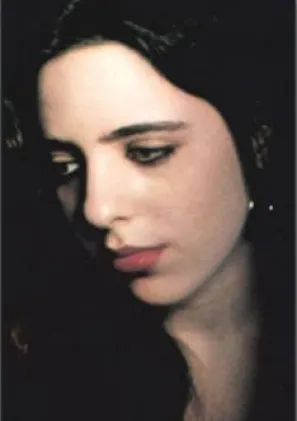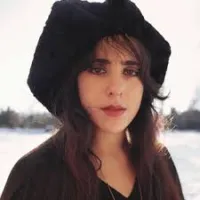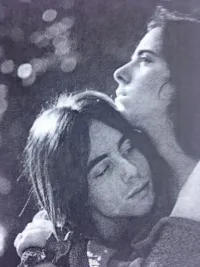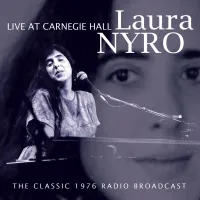Biography
1947 - 1997
"As beautiful as simplicity is, it can become a tradition that stands in the way of exploration."
- Laura Nyro
It would be difficult to overstate Laura Nyro's influence on late-20th-century popular music. A self-taught pianist who grew up listening to Leontyne Price, Billie Holiday, Debussy, and Ravel, Nyro began composing songs as a child and attended Manhattan's High School of Music and Art. In 1966 she sold her first song – "And When I Die" – at the age of 19. Between 1968 and 1970 a number of her songs achieved significant success on the Billboard charts: "Wedding Bell Blues" (#1) and “Stoned Soul Picnic” (#2) both by The Fifth Dimension; "And When I Die" (#2) by Blood, Sweat, and Tears; "Eli's Coming" (#10) by Three Dog Night; and "Stoney End" (#1) by Barbra Streisand. Nyro's evocative style mixed jazz and rhythm-and-blues with street pop, gospel and Broadway. A number of her songs – the antiwar "Save the Country," the feminist "Women of the One World," and the environmentalist "Lite a Flame" – addressed social issues – especially "Broken Rainbow," the title song for an Academy Award winning documentary about the relocation of the Navajo. Throughout her career Nyro maintained a very strong lesbian following, in some respects due to “Emmie,” a 1968 song in which she seems to proclaim her romantic love for another woman. Nyro always rejected that interpretation, however, insisting instead that the song was about universal womanhood. She never publicly acknowledged her own sexuality, which included relationships with both men and women, privately referring to herself as “woman identified.” In 1977 Nyro met painter Maria Desiderio. The two women were together until Nyro’s death of ovarian cancer in 1997 at age 49. In a tragic coincidence, Desiderio also died of ovarian cancer less than two years later. Her ashes are buried alongside Nyro’s (and those of Ember, Nyro’s beloved German Shepard) at the base of a Japanese maple tree planted at Nyro’s home in Connecticut in her memory.
1947 - 1997
"As beautiful as simplicity is, it can become a tradition that stands in the way of exploration."
- Laura Nyro
It would be difficult to overstate Laura Nyro's influence on late-20th-century popular music. A self-taught pianist who grew up listening to Leontyne Price, Billie Holiday, Debussy, and Ravel, Nyro began composing songs as a child and attended Manhattan's High School of Music and Art. In 1966 she sold her first song – "And When I Die" – at the age of 19. Between 1968 and 1970 a number of her songs achieved significant success on the Billboard charts: "Wedding Bell Blues" (#1) and “Stoned Soul Picnic” (#2) both by The Fifth Dimension; "And When I Die" (#2) by Blood, Sweat, and Tears; "Eli's Coming" (#10) by Three Dog Night; and "Stoney End" (#1) by Barbra Streisand. Nyro's evocative style mixed jazz and rhythm-and-blues with street pop, gospel and Broadway. A number of her songs – the antiwar "Save the Country," the feminist "Women of the One World," and the environmentalist "Lite a Flame" – addressed social issues – especially "Broken Rainbow," the title song for an Academy Award winning documentary about the relocation of the Navajo. Throughout her career Nyro maintained a very strong lesbian following, in some respects due to “Emmie,” a 1968 song in which she seems to proclaim her romantic love for another woman. Nyro always rejected that interpretation, however, insisting instead that the song was about universal womanhood. She never publicly acknowledged her own sexuality, which included relationships with both men and women, privately referring to herself as “woman identified.” In 1977 Nyro met painter Maria Desiderio. The two women were together until Nyro’s death of ovarian cancer in 1997 at age 49. In a tragic coincidence, Desiderio also died of ovarian cancer less than two years later. Her ashes are buried alongside Nyro’s (and those of Ember, Nyro’s beloved German Shepard) at the base of a Japanese maple tree planted at Nyro’s home in Connecticut in her memory.
Demography
Demography
Gender Female
Sexual Orientation Bisexual
Gender Identity Cisgender
Ethnicity Caucasian/White
Faith Construct Judaic
Nations Affiliated United States
Era/Epoch Information Age (1970-present)
Field(s) of Contribution
Entertainer
Music
Commemorations & Honors
Women Produced Tribute Concert for Nyro at the Beacon Theatre (1997)
Hybrid Daylily Flower Named After Nyro (2000)
Posthumous Rock and Roll Hall of Fame Inductee (2012)
Demography
Gender Female
Sexual Orientation Bisexual
Gender Identity Cisgender
Ethnicity Caucasian/White
Faith Construct Judaic
Nations Affiliated United States
Era/Epoch Information Age (1970-present)
Field(s) of Contribution
Entertainer
Music
Commemorations & Honors
Women Produced Tribute Concert for Nyro at the Beacon Theatre (1997)
Hybrid Daylily Flower Named After Nyro (2000)
Posthumous Rock and Roll Hall of Fame Inductee (2012)
Resources
Resources
http://en.wikipedia.org/wiki/Laura_Nyro
http://www.anb.org/articles/18/18-03520.html
http://www.ew.com/article/1997/04/25/laura-nyros-legacy-passion
http://www.rollingstone.com/music/news/laura-nyro-dead-at-49-19970410
https://www.theguardian.com/music/musicblog/2017/apr/19/laura-nyro-songwriter-passion-and-soul
https://www.goldminemag.com/articles/laura-nyro-made-her-mark-writing-h…
Resources
http://en.wikipedia.org/wiki/Laura_Nyro
http://www.anb.org/articles/18/18-03520.html
http://www.ew.com/article/1997/04/25/laura-nyros-legacy-passion
http://www.rollingstone.com/music/news/laura-nyro-dead-at-49-19970410
https://www.theguardian.com/music/musicblog/2017/apr/19/laura-nyro-songwriter-passion-and-soul
https://www.goldminemag.com/articles/laura-nyro-made-her-mark-writing-h…









